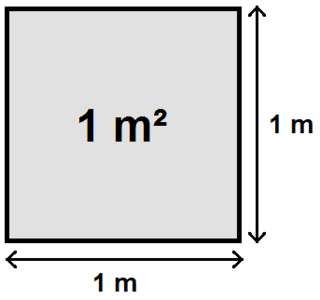The byte is a unit of digital information that most commonly consists of eight bits. 1 byte (B) = 8 bits (bit). Historically, the byte was the number of bits used to encode a single character of text in a computer and for this reason it is the smallest addressable unit of memory in many computer architectures. To disambiguate arbitrarily sized bytes from the common 8-bit definition, network protocol documents such as the Internet Protocol refer to an 8-bit byte as an octet. Those bits in an octet are usually counted with numbering from 0 to 7 or 7 to 0 depending on the bit endianness.
A binary prefix is a unit prefix that indicates a multiple of a unit of measurement by an integer power of two. The most commonly used binary prefixes are kibi (symbol Ki, meaning 210 = 1024), mebi (Mi, 220 = 1048576), and gibi (Gi, 230 = 1073741824). They are most often used in information technology as multipliers of bit and byte, when expressing the capacity of storage devices or the size of computer files.

The gigabyte is a multiple of the unit byte for digital information. The prefix giga means 109 in the International System of Units (SI). Therefore, one gigabyte is one billion bytes. The unit symbol for the gigabyte is GB.

Giga- ( or ) is a unit prefix in the metric system denoting a factor of a short-scale billion or long-scale milliard (109 or 1,000,000,000). It has the symbol G.
The kilobyte is a multiple of the unit byte for digital information.
Kilo is a decimal unit prefix in the metric system denoting multiplication by one thousand (103). It is used in the International System of Units, where it has the symbol k, in lowercase.

The litre or liter is a metric unit of volume. It is equal to 1 cubic decimetre (dm3), 1000 cubic centimetres (cm3) or 0.001 cubic metres (m3). A cubic decimetre occupies a volume of 10 cm × 10 cm × 10 cm and is thus equal to one-thousandth of a cubic metre.
The megabyte is a multiple of the unit byte for digital information. Its recommended unit symbol is MB. The unit prefix mega is a multiplier of 1000000 (106) in the International System of Units (SI). Therefore, one megabyte is one million bytes of information. This definition has been incorporated into the International System of Quantities.
A metric prefix is a unit prefix that precedes a basic unit of measure to indicate a multiple or submultiple of the unit. All metric prefixes used today are decadic. Each prefix has a unique symbol that is prepended to any unit symbol. The prefix kilo-, for example, may be added to gram to indicate multiplication by one thousand: one kilogram is equal to one thousand grams. The prefix milli-, likewise, may be added to metre to indicate division by one thousand; one millimetre is equal to one thousandth of a metre.
SI derived units are units of measurement derived from the seven SI base units specified by the International System of Units (SI). They can be expressed as a product of one or more of the base units, possibly scaled by an appropriate power of exponentiation. Some are dimensionless, as when the units cancel out in ratios of like quantities. SI coherent derived units involve only a trivial proportionality factor, not requiring conversion factors.

Ton is any of several units of measure of mass, volume or force. It has a long history and has acquired several meanings and uses.

The tonne is a unit of mass equal to 1,000 kilograms. It is a non-SI unit accepted for use with SI. It is also referred to as a metric ton in the United States to distinguish it from the non-metric units of the short ton and the long ton. It is equivalent to approximately 2,204.6 pounds, 1.102 short tons, and 0.984 long tons. The official SI unit is the megagram (Mg), a less common way to express the same amount.

The square metre or square meter is the unit of area in the International System of Units (SI) with symbol m2. It is the area of a square with sides one metre in length.

The cubic foot is an imperial and US customary (non-metric) unit of volume, used in the United States and the United Kingdom. It is defined as the volume of a cube with sides of one foot in length. Its volume is 28.3168 L.

A power of two is a number of the form 2n where n is an integer, that is, the result of exponentiation with number two as the base and integer n as the exponent.
A unit prefix is a specifier or mnemonic that is added to the beginning of a unit of measurement to indicate multiples or fractions of the units. Units of various sizes are commonly formed by the use of such prefixes. The prefixes of the metric system, such as kilo and milli, represent multiplication by positive or negative powers of ten. In information technology it is common to use binary prefixes, which are based on powers of two. Historically, many prefixes have been used or proposed by various sources, but only a narrow set has been recognised by standards organisations.
IEEE 1541-2002 is a standard issued in 2002 by the Institute of Electrical and Electronics Engineers (IEEE) concerning the use of prefixes for binary multiples of units of measurement related to digital electronics and computing. IEEE 1541-2021 revises and supersedes IEEE 1541–2002, which is 'inactive'.
This timeline of binary prefixes lists events in the history of the evolution, development, and use of units of measure that are germane to the definition of the binary prefixes by the International Electrotechnical Commission (IEC) in 1998, used primarily with units of information such as the bit and the byte.

The cubic metre or cubic meter is the unit of volume in the International System of Units (SI). Its symbol is m3. It is the volume of a cube with edges one metre in length. An alternative name, which allowed a different usage with metric prefixes, was the stère, still sometimes used for dry measure. Another alternative name, no longer widely used, was the kilolitre.







